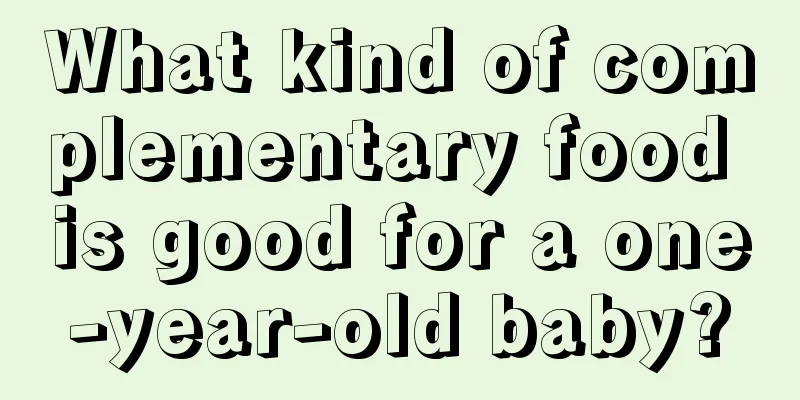Is it serious if my baby is mycoplasma positive?

|
After having a child at home, you should take the baby to the hospital for a physical check-up every once in a while. This will not only ensure the baby's physical health, but also allow the baby to receive treatment in time if any symptoms of illness are found, so as not to affect the baby's growth. For example, some parents took their children for examination and were told that their children were mycoplasma positive. So, is it serious if the baby is mycoplasma positive? Mycoplasma infection in children is a tiny microorganism that is smaller than bacteria but larger than viruses. It is the smallest prokaryotic organism that can live independently, but it also has some characteristics of bacteria. There is a type of Mycoplasma pneumoniae that is a common pathogen that causes pneumonia in children. The "SARS" caused by the newly emerged SARS virus in 2003 was actually "stole" the name "atypical pneumonia" because the cause of the disease was unknown at the beginning. True atypical pneumonia is the old name for mycoplasma pneumonia, which accounts for 15% to 20% of pediatric pneumonia. Mycoplasma was discovered in 1898 and is a simple prokaryotic cell. Its size is between bacteria and viruses. The structure is also relatively simple, most of them are spherical, without cell walls, only a three-layer cell membrane, so it has greater variability. Mycoplasmas can be grown by inoculation on special culture media. Mycoplasma is a type of prokaryotic microorganism that lacks a cell wall. Its size is generally between 0.3-0.5um and it is highly polymorphic, with various forms such as spherical, rod-shaped, filamentous, and branched. It is different from cells and different from viruses. Mycoplasma is not easily stained by ordinary staining methods, stains very lightly with Giemsa, and is negative with Gram staining. Mycoplasmas can grow on the chorioallantoic membrane of chicken embryos or in cell culture and have higher nutritional requirements than bacteria. Mycoplasmas are of many types, widely distributed, and cause considerable harm, involving multiple fields such as humans, animals, plants, and insects, bringing adverse effects on human health and scientific research. Among the 16 mycoplasmas isolated from the human body, 5 are pathogenic to humans, namely Mycoplasma pneumoniae, Ureaplasma urealyticum, Mycoplasma hominis, Mycoplasma genitalium and Mycoplasma fermentans. Mycoplasma is a tiny microorganism that is smaller than bacteria but larger than viruses. Unlike viruses, it cannot live independently and needs to attach to other organisms. It is the smallest prokaryotic organism that can live independently. There are many types of mycoplasma, among which Mycoplasma pneumoniae is the "culprit" that causes baby illness. When a patient sneezes, Mycoplasma pneumoniae will be released with the droplets and enter the infected baby's respiratory mucosal epithelial cells, but will not enter the blood. Mycoplasma adhering to the epithelial cells absorb nutrients from the cells and cause cell damage. In addition, the toxic substances produced by mycoplasma metabolism will also aggravate cell damage and cause various diseases. disease The incubation period of Mycoplasma pneumoniae infection in children is relatively long, and most of the symptoms are pharyngitis, rhinitis, tracheitis and bronchiolitis, with obvious fatigue and loss of appetite. The cough is dry at the beginning and then turns into a stubborn and severe cough without sputum or accompanied by a small amount of sticky sputum, especially at night. Infants and young children show wheezing and difficulty breathing. In severe cases, mycoplasma pneumonia may occur. Children who develop mycoplasma pneumonia account for 3% to 10% of all those infected with Mycoplasma pneumonia. Mycoplasma pneumoniae infection may also cause lesions in organs other than the respiratory tract, such as myocarditis, hepatitis, arthritis, nephritis, meningitis, hemolytic anemia, thrombocytopenic purpura, etc. Mycoplasma pneumoniae can also cause lesions in other systems and organs, such as measles-like rash, myalgia, migratory joint pain, liver function damage, hemolytic anemia, meningoencephalitis, myocarditis, pericarditis, nephritis, etc. |
<<: What are mycoplasma antibodies in children?
>>: What happens when children spit?
Recommend
How many months does it take for a child to speak?
In fact, every child learns to speak at a differe...
Children's nails fall off from the root
Children often. When playing around, children may...
What's wrong with the child falling asleep?
Children in their early childhood have relatively...
How to eat eggs for children?
Eggs have high nutritional value and are nutritio...
Why does my baby drool due to eczema?
Eczema is one of the more common skin diseases in...
At what age is it best for children to change their teeth?
Children grow up slowly and their body functions ...
What should I do if my child has learning pressure?
If children are under too much pressure from stud...
What to do if your baby is not gaining weight
Height reflects the baby's long-term nutritio...
What should I do if my baby always has eye mucus?
The baby always has eye mucus. Mostly it’s becaus...
Why is the child's skin yellow?
Newborn babies always have yellow skin, which usu...
What causes baby's skin to turn yellow?
There are many reasons for the baby's skin to...
What if the baby doesn't have teeth at eleven months old?
Teething is a stage that babies must go through i...
Reasons why baby vomits sour milk
Many parents often find that their babies spit up...
What is the reason for a six-month-old baby's runny nose?
There are many reasons why babies have runny nose...
Can children eat Polygonum multiflorum?
Polygonum multiflorum has always been regarded as...









